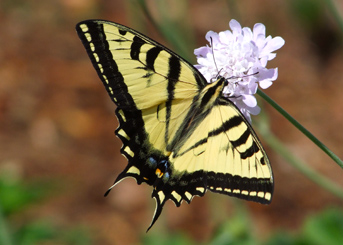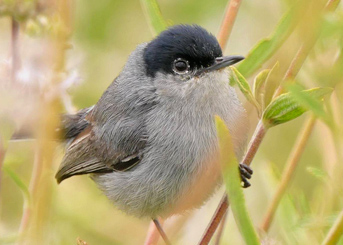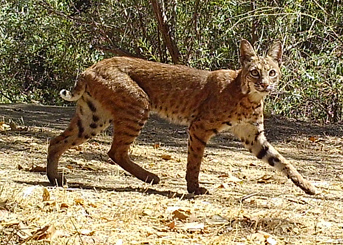The Puente Hills Preserve hours are designed to protect the ecosystem, and sustain the balance between recreation and nature.
Hellman, Sycamore, Hacienda Hills, Turnbull:
9am – 5 pm (October – April)
9am – 6pm (May – September)
(Powder Canyon and Arroyo Pescadero hours are currently sunrise to sunset)
Please be sure to click our Preserve & Trail Hours button for the current status of our trails.
Why Are the Preserve Hours 9am – 5pm/6pm.?
Short answer: Mainly to protect the natural resources
Long answer: To Support the Habitat Authority’s Mission
The Habitat Authority’s mission: The Puente Hills Habitat Preservation Authority is dedicated to the acquisition, restoration, and management of open space in the Puente Hills for preservation of the land in perpetuity, with the primary purpose to protect the biological diversity. Additionally, the agency will endeavor to provide opportunities for outdoor education and low-impact recreation.

The Habitat Authority’s mission gives priority to the protection of biological diversity. The intent of the Habitat Authority is, in part, to continually monitor and manage the trails in order to balance recreation with the health of the ecosystem.
Visitation Increase
The visitation to the 3,870 acre Puente Hills Preserve (Preserve), has increased substantially. In 2005, the first user survey at the trailheads Preserve-wide found that the daily visitation count was 228.[1] In 2016, the daily visitation jumped dramatically to 2,600.[2] This increase in use can impact the natural resources as explained below.
To Protect the Quality of Biological Resources
Biodiversity
The Preserve is rich in biodiversity and supports a variety of native habitats and species, including sensitive, rare and federally listed species. The coastal California gnatcatcher, a federally threatened species, has been repeatedly documented in the Preserve, as well as the coastal cactus wren, a sensitive species.[3] The Preserve supports various groups of habitat such as coastal sage scrub, chaparral, oak and walnut woodlands, and riparian vegetation. Also, it has representative species from all trophic levels including four amphibians, nine reptiles, 124 birds, and 30 mammals. The Preserve is a fully functioning ecosystem.[4]

Wildlife disturbance after dark
The Preserve is home to a wide range of diurnal, crepuscular and nocturnal animals. Crepuscular animals are most active at dawn and dusk. During this small window of time, crepuscular animals must feed, find mates, seek shelter, etc. and many species are only active during the crepuscular and/or nocturnal hours. With the continual added pressure due to increased visitor activity during the day, it becomes more important to provide relief to wildlife during crepuscular (dawn/dusk) and nocturnal times. Enforcement activities by rangers have tried to address the ongoing and most consuming challenge of closing the Preserve at sunset. Nightly trailhead gate closures take a significant portion of the rangers’ time, and the vast majority of all ranger contacts with visitors pertain to enforcing Preserve hours at closing time.
User Created Trails, Trail Widening/Trail Erosion
Illegal trails and widening of trails contributes to habitat loss/fragmentation decreasing the quality and functionality of the habitat. According to the Habitat Authority’s trail evaluation in 2016, there were 3 additional miles of illegal trails compared to when the trails were first surveyed in 2002 in the Hellman Park and Turnbull Canyon areas.[5] Trail widths in Hellman Park and Turnbull Canyon areas had expanded one to 11 feet.
To Protect the Quality of Recreation
In some instances the dramatic increase in visitation has negatively impacted the Preserve’s recreational quality with potential user conflicts, parking and traffic congestion, and the feeling of being crowded.[6] Also, depreciative behaviors such as graffiti, vandalism, litter, dog waste, dumping, and crime have become increasingly challenging to manage given limited resources.
To Reduce Confusion of Hours
There has been constant confusion by the public about what defines sunrise/sunset, and understandably many people are too busy with their daily lives to track the daily changing times. “Set times”, such as 9am to 6pm, are easier to describe, understand and enforce. Other park agencies use a similar set time hours system.[7]
[1] USC User Survey Report, completed in 2006.
[2] Extrapolated from a 3-day visitor count survey in 2016. Puente Hills Habitat Preservation Authority, Supplemental 2016 Recreation Use Assessment.
[3] Cooper Ecological Monitoring 2009 Report, Page 9.
[4] Puente Hills Habitat Preservation Authority’s Resource Management Plan.
[5] 2016 trails evaluation conducted by Habitat Authority consultant, Placeworks. Other areas had similar impacts.
[6] Puente Hills Habitat Preservation Authority, Supplemental 2016 Recreation Use Assessment, page 18.
[7] For further detailed information on the topic of changing hours please see here





